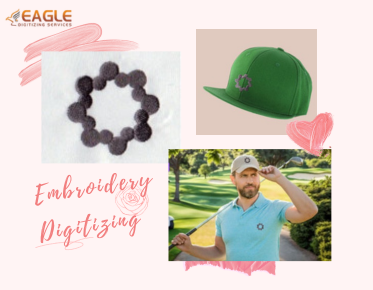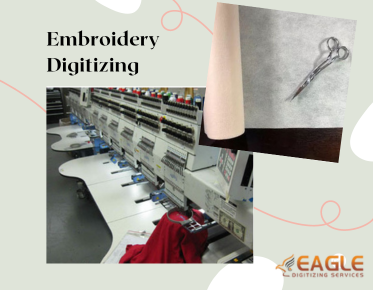A Guide To Every Essential Post-Embroidery Care Tip/Eagle Digitizing
When it comes to embroidery, the magic often lies in the stitching process. However, the journey doesn’t end once the last thread is woven into place. Post-embroidery care is crucial for preserving the beauty and integrity of your creations. The way you handle, clean, and maintain your embroidered items can make a significant difference in their longevity and visual appeal. Treating your work with the care it deserves not only enhances its aesthetic value but also showcases your craftsmanship. So let’s delve into the essentials of post-embroidery care and ensure your embroidered pieces shine for years to come. If this post spurred your interest and you want to find out more about embroidery digitizing, please feel free to contact us.
Understanding Your Embroidered Piece: What to Expect
Recognizing Different Types of Embroidery Materials
Embroidery materials come in a delightful array, each with its unique characteristics and care requirements. From delicate silks to robust kinds of cotton, understanding the type of fabric and thread used in your embroidery is fundamental. Silks, for instance, exude elegance but demand gentle handling, while cotton can endure a bit more wear and tear. Familiarize yourself with the materials to tailor your care methods accordingly.
Assessing the Quality of Your Embroidery Work
Quality assessment is a key step in post-embroidery care. Take a moment to inspect your work closely. Look for any loose threads, uneven stitching, or areas where the fabric may have puckered. A well-executed embroidery piece should be free of flaws, but minor imperfections can be corrected with some tender loving care. Understanding the quality of your embroidery helps inform the appropriate post-care steps to take.
Understanding Common Post-Embroidery Needs
Every embroidered piece has unique needs, depending on its complexity and purpose. Common post-embroidery care requirements include cleaning, stabilizer removal, and proper storage. By familiarizing yourself with these needs, you can ensure that your work retains its beauty and functionality over time.
Removing Excess Stabilizer: Techniques for a Clean Finish
Why Stabilizer Matters: The Role in Embroidery
Stabilizers are unsung heroes in the embroidery world, providing support during stitching to ensure precision and neatness. They prevent fabric distortion and help maintain the integrity of the design. However, once the embroidery is complete, the excess stabilizer can detract from the finished piece if not removed properly.
Types of Stabilizers: Tear-Away, Cut-Away, and Wash-Away
Understanding the different types of stabilizers is key to effective removal. Tear-away stabilizers are designed to be easily torn off after stitching, while cut-away stabilizers remain intact for added durability. Wash-away stabilizers dissolve in water, making them ideal for delicate fabrics. Choose the right method based on the stabilizer you’ve used for your project.
Step-by-Step Guide to Removing Stabilizer Effectively
1. Identify the Stabilizer: Determine what type of stabilizer was used to plan the removal method.
2. Gently Pull or Tear: For tear-away stabilizers, gently pull from the edges to avoid damaging the embroidery. If it’s cut away, use sharp scissors to trim away the excess.
3. Rinse if Necessary: If you used a wash-away stabilizer, submerge the piece in lukewarm water and gently agitate it until the stabilizer dissolves.
4. Pat Dry: Use a soft towel to pat the embroidered piece dry, avoiding any rubbing that may affect the stitches.
5. Let it Air Dry: Allow your piece to air dry completely before moving on to cleaning or pressing.
Cleaning Your Embroidered Item: Best Practices
How to Determine the Right Cleaning Method for Your Fabric
The cleaning method you choose is paramount to preserving the integrity of your embroidered piece. Always check the care label of the fabric, as it will provide insights into the most suitable cleaning techniques. Natural fibers like cotton and linen may tolerate washing better than delicate silks or wools.
Tips for Hand Washing vs. Machine Washing Embroidery
When it comes to washing, hand washing is generally gentler and preferred for intricate embroidery. Fill a basin with lukewarm water and a mild detergent, then submerge the piece, gently swishing it around. For machine washing, use a delicate cycle and place your embroidery in a mesh laundry bag to minimize agitation. Avoid using bleach or harsh chemicals, as they can damage both fabric and thread.
The Role of Fabric Softeners: To Use or Not to Use?
Fabric softeners can be a double-edged sword in the embroidery world. While they can make fabrics feel softer, they may leave residues that could interfere with the appearance of your embroidery. It’s advisable to test fabric softeners on a small area or avoid them altogether to preserve the texture and color of your threads.
Ironing and Pressing Your Embroidery: Getting It Just Right
When and How to Iron Your Embroidered Piece
Ironing is often necessary to eliminate creases and restore the fabric’s original shape. However, timing is crucial. Always iron your piece once it’s fully dry. Use a low heat setting to prevent scorching or damaging the threads, especially if they’re synthetic.
Using a Pressing Cloth to Protect Your Design
A pressing cloth is an invaluable tool in post-embroidery care. Placing a thin cotton cloth over your embroidery before ironing protects the threads and prevents direct contact with the iron, reducing the risk of flattening delicate details. This method ensures your design retains its dimensionality.
Steam vs. Dry Ironing: What’s Best for Your Fabric?
Steam ironing can be beneficial for certain fabrics, helping to relax fibers and smooth out wrinkles. However, for more delicate threads, dry ironing is often a safer choice. Assess the fabric and threads used in your embroidery to determine the best approach, ensuring that your design remains intact and vibrant.
Trimming and Finishing Edges: A Polished Look
How to Trim Excess Threads for a Neat Appearance
Trimming loose threads is essential for achieving a polished look. Use sharp embroidery scissors for precision, carefully snipping any stray threads close to the fabric without cutting into the embroidery. A tidy finish speaks volumes about your craftsmanship and attention to detail.
Techniques for Finishing Edges: Serging, Binding, and More
Finishing edges not only enhances the appearance of your embroidery but also prevents fraying. Techniques such as serging, binding, or using bias tape can add a professional touch. Choose a method that complements the fabric and style of your piece, ensuring that your embroidery is both beautiful and functional.
Choosing the Right Method for Different Fabrics
Different fabrics require different finishing methods. For heavier fabrics, serging may be the best option to provide durability. For lighter materials, binding or zigzag stitching can be effective while maintaining a delicate appearance. Tailoring your approach based on fabric type ensures that your embroidered items remain intact and visually appealing.
Enhancing Your Embroidery with Additional Embellishments
Exploring Ways to Add Beads, Sequins, or Appliqué
Embellishments can elevate your embroidery to new heights, adding texture and visual interest. Consider incorporating beads, sequins, or appliqué to enhance your design. These elements can create stunning focal points and transform a simple piece into a masterpiece.
How to Incorporate Additional Stitching for Texture
Adding extra stitching can also create depth and dimension. Experiment with different stitch types and patterns to enrich your design. Consider using contrasting threads or colors to make the additional stitching pop, drawing attention to your craftsmanship.
Tips for Balancing Embellishments with Your Design
While embellishments can enhance your embroidery, balance is key. Too many embellishments can overwhelm the original design. Aim for harmony by selecting a few standout elements that complement the existing stitches without detracting from the overall composition.
Maintaining Your Embroidered Item Over Time
Regular Care Tips to Keep Embroidery Looking Fresh
Maintaining your embroidered items requires regular care. Dusting them gently with a soft cloth helps keep them looking fresh. For items that see frequent use, consider periodic cleaning and inspections to catch any potential issues before they escalate.
How to Handle Stains and Spot Cleaning Effectively
Stains can be daunting, but prompt action is crucial. Blot stains gently with a clean cloth to absorb excess liquid without spreading it. Use a mild detergent or specialized stain remover, applying it with a soft brush. Always test in an inconspicuous area first to avoid discoloration.
The Importance of Regular Inspections and Upkeep
Regular inspections are essential for catching wear and tear early on. Check for loose threads, fading colors, or fabric damage. Addressing these issues promptly can extend the life of your embroidered pieces, ensuring they remain beautiful for years to come.
Using Your Embroidery: Practical Considerations
How to Safely Use and Wear Your Embroidered Items
Using and wearing your embroidered items should be an enjoyable experience. However, consider the contexts in which you’ll be using them. Avoid high-stress environments, like heavy labor, to preserve your work. Treat your embroidery as the art it is—handle it with care and pride.
Tips for Care in Different Environments: Home, Work, and Outdoor
Different environments present unique challenges. For home use, consider placing embroidered items in areas away from direct sunlight to prevent fading. In work settings, avoid exposure to sharp objects that might snag your threads. Outdoor events require extra vigilance—keeping your embroidery safe from the elements ensures its longevity.
The Do’s and Don’ts of Showing Off Your Embroidered Creations
Displaying your embroidered creations is a joy, but there are some do’s and don’ts to keep in mind. Do choose appropriate settings that highlight your work, such as framed displays or decorative pillows. Don’t expose them to excessive wear or harsh conditions. Protecting your work allows you to enjoy it for years to come.
Incorporating Your Embroidery into Home Decor
Creative Ways to Use Embroidery in Home Design
Embroidered pieces can bring warmth and personality to any space. Consider using them as wall art, decorative pillows, or table runners. The possibilities are endless—embrace your creativity to infuse your home with your unique style.
Tips for Framing or Displaying Your Embroidered Art
Framing your embroidery not only protects it but also elevates its presentation. Use UV-filtering glass to prevent fading, and choose frames that complement your piece. When displaying, consider lighting to enhance its visual appeal, ensuring it remains a focal point in your décor.
How to Blend Embroidery with Other Decor Elements
To create a harmonious look, blend your embroidery with other decor elements. Consider color schemes, textures, and patterns to achieve a cohesive design. Combining embroidery with complementary items, like fabrics or artwork, enhances your home’s aesthetic. Read Here are Some Vital Elements That You Should Comprehend About Embroidery Digitizing in USA!
Post-embroidery care is an art form in itself. By understanding the needs of your embroidered pieces, you can ensure they remain beautiful and functional over time. From proper cleaning techniques to thoughtful presentations, every detail matters. Take pride in your creations, embracing the beauty and craftsmanship that embroidery brings to your life. With a little care and attention, your embroidered pieces will continue to dazzle and inspire for many years to come.


.png)
